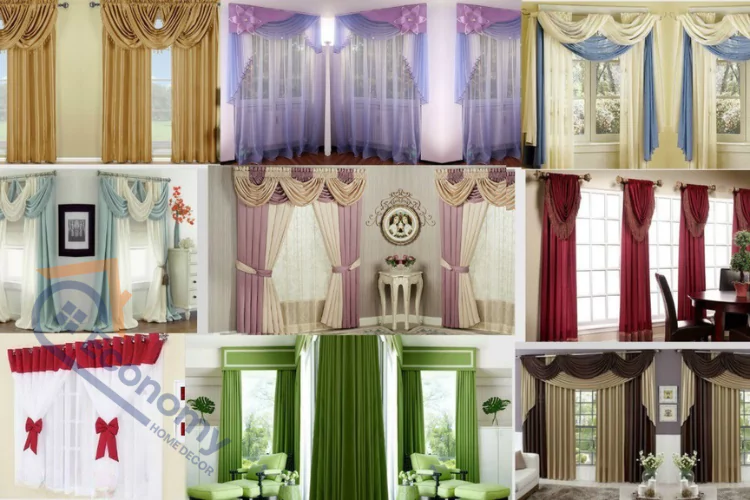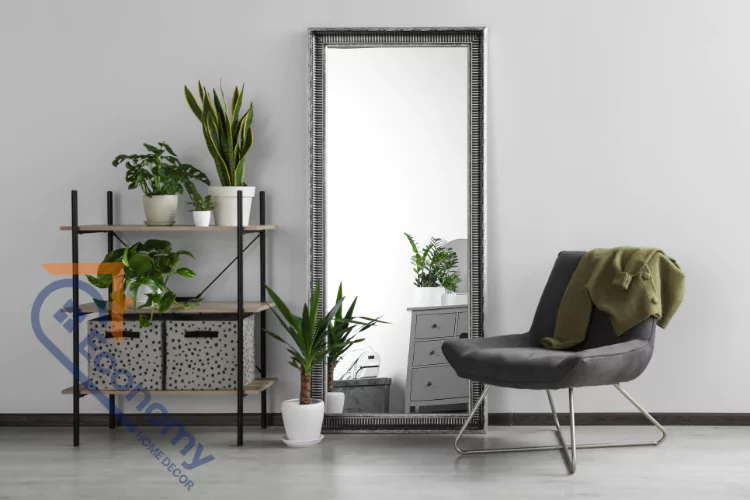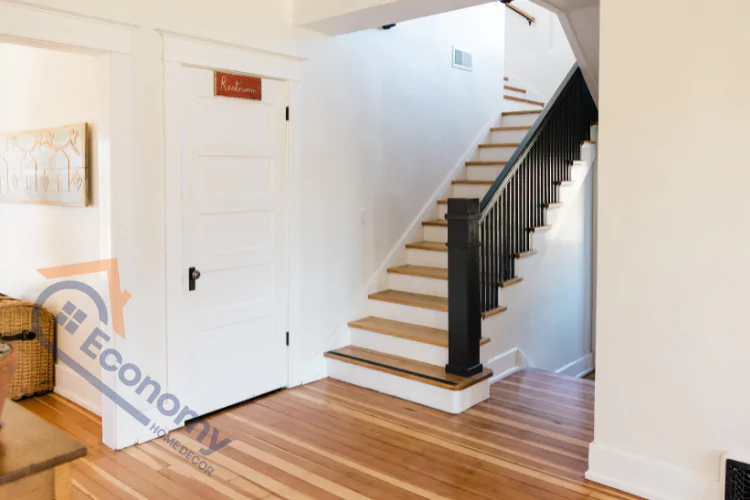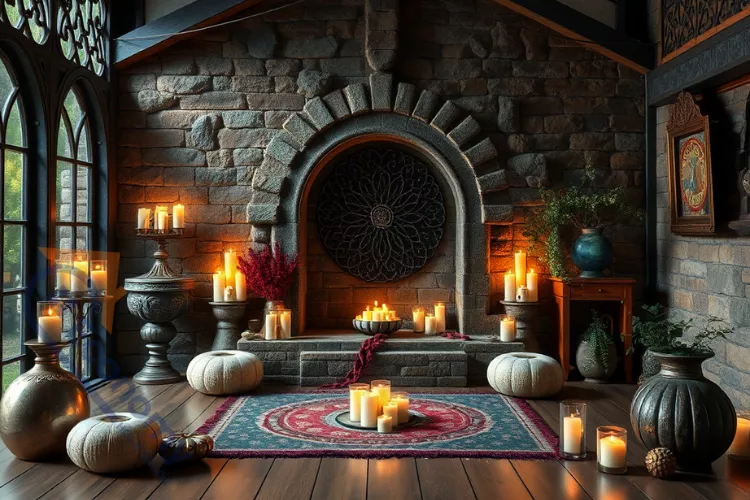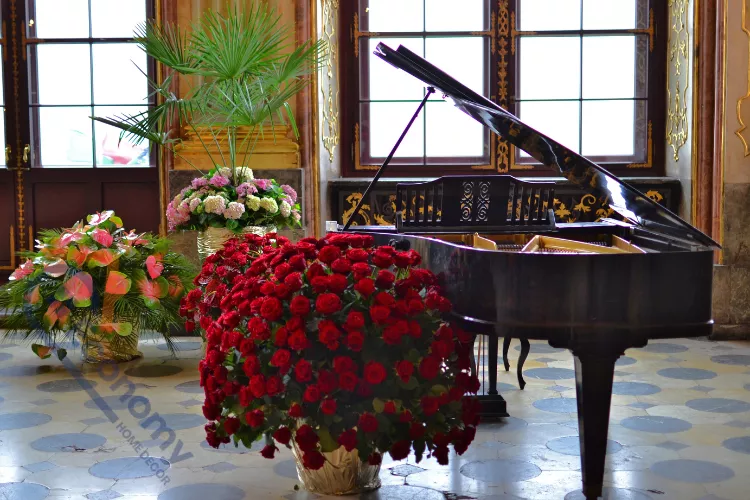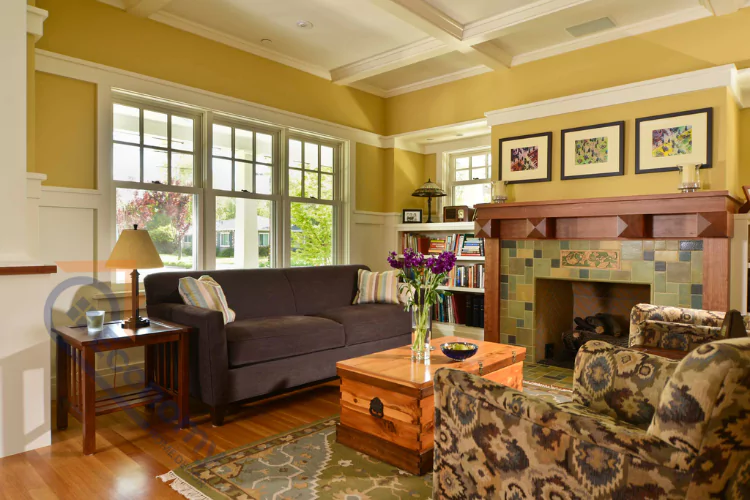Living in a townhouse offers the perfect blend of urban convenience and spacious comfort, but decorating these unique multi-level homes requires thoughtful planning and creative solutions. Whether you’re dealing with narrow layouts, limited outdoor space, or challenging vertical arrangements, the right townhouse decorating ideas can transform your home into a stylish and functional sanctuary. From maximizing natural light to creating seamless flow between floors, successful townhouse interior decorating combines smart design principles with personal style to make every square foot count.
Townhouses present both opportunities and challenges that differ from traditional single-family homes or apartments. Their vertical nature means you’ll need to think strategically about how rooms connect and flow together, while their often narrow footprint requires clever storage solutions and space-saving techniques. The key to successful townhouse decor lies in understanding these unique characteristics and using them to your advantage rather than fighting against them.
Understanding Your Townhouse Layout
Before diving into specific townhouse decorating tips, it’s essential to understand your home’s unique layout and architectural features. Most townhouses feature a vertical design with multiple floors, narrow width, and shared walls on either side. This configuration creates both opportunities and limitations that will influence your decorating decisions throughout the home.
The typical townhouse layout includes a ground floor entry with living spaces, a second floor with bedrooms and bathrooms, and sometimes a basement or third floor for additional rooms. Many townhouses also feature small outdoor spaces like patios, balconies, or rooftop decks that can be incorporated into your overall design scheme. Understanding these elements helps you create a cohesive decorating plan that works with your home’s natural flow.
Consider the natural traffic patterns in your townhouse when planning your decorating approach. Since residents and guests will frequently move between floors, creating visual connections and maintaining consistent design elements throughout the home becomes crucial. This might involve using similar color palettes, repeating certain materials, or ensuring that sightlines between floors feel intentional and harmonious.
The narrow width of most townhouses means that maximizing horizontal space becomes a priority. This doesn’t mean cramming furniture into tight spaces, but rather choosing pieces that serve multiple functions and arranging them to create the illusion of width. Strategic use of mirrors, horizontal artwork, and furniture placement can make rooms feel significantly larger than their actual square footage.
Maximizing Natural Light in Multi-Level Homes
One of the biggest challenges in townhouse decorating ideas involves working with limited natural light, especially in interior rooms and lower floors. Since townhouses typically have windows only on the front and back walls, the middle sections of each floor can feel dark and cramped without proper lighting strategies.
Light-colored paint choices can dramatically impact how spacious and bright your townhouse feels. Whites, creams, and pale neutrals reflect available light and create a sense of airiness that’s particularly important in narrow spaces. Consider using slightly different shades of the same color family throughout your home to maintain visual flow while adding subtle interest to individual rooms.
Strategic mirror placement serves as one of the most effective townhouse interior decor techniques for amplifying natural light. Large mirrors positioned across from windows can double the amount of light in a room, while mirrored furniture pieces or decorative accessories can create additional light reflection without overwhelming the space. Avoid placing mirrors where they’ll create awkward reflections of daily activities or create visual confusion in already narrow spaces.
Window treatments play a crucial role in maximizing available light while maintaining privacy in close-quarters townhouse living. Opt for treatments that can be completely opened during the day, such as roman shades or curtains that stack well beyond the window frame. Sheer panels or light-filtering blinds provide privacy without significantly reducing natural light transmission.
Consider installing skylights or solar tubes in interior areas where traditional windows aren’t possible. These additions can bring natural light to hallways, stairwells, and interior bathrooms, making your entire townhouse feel brighter and more connected to the outdoors.
Creating Flow Between Floors
Successful townhouse living room decor must consider how the space connects to other areas of the home, particularly the floors above and below. Creating visual and functional flow between levels prevents your townhouse from feeling like a collection of disconnected rooms stacked on top of each other.
Consistent flooring choices throughout your townhouse can create a sense of continuity that makes the entire home feel larger and more cohesive. If budget constraints make uniform flooring impossible, choose materials that complement each other and maintain similar color tones or textures. For example, hardwood floors on the main level might transition to luxury vinyl plank upstairs, provided both maintain similar warm wood tones.
Staircase design and decoration offer opportunities to reinforce your overall decorating theme while serving as a central design feature. Consider the staircase as a vertical gallery wall opportunity, displaying artwork or family photos that tell a story as visitors move between floors. Ensure adequate lighting on staircases for both safety and visual appeal, using pendant lights, sconces, or LED strip lighting as appropriate for your home’s style.
Color coordination between floors doesn’t mean everything must match exactly, but rooms should feel related and intentional. You might use the same accent color in different intensities on each floor, or carry similar patterns or textures throughout the home in varying scales. This approach allows each floor to have its own personality while maintaining overall townhouse decor cohesion.
Open floor plans on individual levels can help create the flow that might be interrupted by the vertical nature of townhouse living. If structural modifications aren’t possible, use furniture arrangement and consistent sight lines to create visual openness that makes each floor feel more spacious and connected.
Smart Storage Solutions for Vertical Living
Limited square footage in townhouses makes smart storage essential for maintaining both style and functionality. The key to effective storage in townhouse decorating ideas lies in utilizing vertical space, hidden storage opportunities, and multi-functional furniture pieces that serve double duty in your home.
Built-in storage solutions work particularly well in townhouses because they can be customized to fit awkward spaces and unusual dimensions common in these homes. Consider floor-to-ceiling bookcases, window seat storage, or custom closet systems that maximize every available inch. These solutions often provide better storage capacity than freestanding furniture while creating a more polished, integrated appearance.
Under-stair storage represents one of the most valuable and often underutilized spaces in townhouse interior decorating. This area can house everything from cleaning supplies and seasonal decorations to books and games, depending on your family’s needs. Custom-built drawers or shelving can make this space both functional and visually appealing, while maintaining easy access to stored items.
Multi-functional furniture becomes essential in small townhouse decor ideas, where every piece must earn its place through multiple uses. Ottoman storage cubes provide seating, surface space, and hidden storage. Dining tables with built-in drawers keep linens and serving pieces easily accessible. Bed frames with integrated storage eliminate the need for additional bedroom furniture in tight quarters.
Vertical wall storage can supplement traditional furniture storage without taking up valuable floor space. Floating shelves, wall-mounted desks, and hanging organizers keep frequently used items accessible while maintaining clean lines and uncluttered surfaces that make townhouses feel larger and more organized.
| Storage Area | Best Solutions | Items to Store |
|---|---|---|
| Under Stairs | Custom drawers, pull-out shelves | Cleaning supplies, seasonal items, books |
| Hallways | Wall-mounted cabinets, floating shelves | Linens, decorations, office supplies |
| Bedrooms | Under-bed storage, built-in wardrobes | Clothing, bedding, personal items |
| Living Areas | Ottoman storage, media consoles | Electronics, games, throws |
| Bathrooms | Over-toilet cabinets, vanity storage | Toiletries, towels, medications |
Color Schemes That Open Up Narrow Spaces
Choosing the right color palette forms the foundation of successful townhouse decorating tips, particularly when dealing with narrow spaces and limited natural light. The colors you select can either enhance your townhouse’s spaciousness or make it feel cramped and claustrophobic, making this one of the most important decisions in your decorating process.
Light, neutral color schemes remain the most reliable choice for making townhouses feel larger and brighter. Whites, creams, pale grays, and soft beiges reflect maximum light while creating a serene backdrop that won’t compete with your furnishings and accessories. These colors also provide flexibility as your decorating style evolves, allowing you to change accent pieces and accessories without repainting entire rooms.
Monochromatic color schemes using varying shades of the same color can create sophisticated depth without the visual interruption that comes from contrasting colors. Consider using different intensities of blues, greens, or grays throughout your townhouse, with darker shades on lower floors gradually lightening as you move upward. This technique can make ceilings appear higher while maintaining visual interest.
Strategic use of darker accent colors can actually enhance the sense of space when applied thoughtfully. Dark colors on far walls can create the illusion of depth, while dark ceilings in rooms with adequate height can make spaces feel more intimate without seeming cramped. Limit dark colors to no more than one wall per room in narrow townhouses to avoid overwhelming the space.
Bold accent colors work best when used sparingly and strategically in townhouse living room decorating ideas. Vibrant pillows, artwork, or small furniture pieces can inject personality and energy into neutral spaces without making rooms feel smaller. Choose one or two accent colors and repeat them throughout your townhouse in different applications to create cohesion.
Furniture Selection for Narrow Layouts
The unique dimensions of townhouses require careful furniture selection that accommodates narrow widths while providing necessary functionality and comfort. Understanding how to choose and arrange furniture in these spaces makes the difference between a townhouse that feels cramped and one that feels efficiently designed and welcoming.
Scale-appropriate furniture is crucial in townhouse decorating ideas, where oversized pieces can quickly overwhelm narrow rooms. Look for furniture with clean lines and legs that elevate pieces off the floor, creating visual lightness and allowing light to flow underneath. Avoid bulky, overstuffed furniture that might be comfortable in larger spaces but feels oppressive in townhouse rooms.
Multi-functional furniture pieces serve double duty in small townhouse decor, where every item must justify its space. Dining tables that extend for entertaining but remain compact for daily use, coffee tables with built-in storage, and sectional sofas that provide ample seating without requiring multiple pieces all help maximize functionality in limited square footage.
Furniture arrangement in townhouses often requires thinking beyond traditional room layouts. Consider floating furniture away from walls to create conversation areas and traffic flow patterns that work with your home’s natural movement. In narrow living rooms, arranging seating perpendicular to the longest walls can create better conversation areas than lining furniture against the walls.
Vertical furniture pieces, such as tall bookcases, floor-to-ceiling storage units, and high-backed dining chairs, can draw the eye upward and make ceilings appear higher. Balance vertical elements with horizontal pieces to avoid creating a tunnel-like effect that emphasizes your townhouse’s narrow dimensions rather than minimizing them.
Outdoor Space Decoration Ideas
Many townhouses include small outdoor spaces such as patios, balconies, or rooftop decks that can significantly extend your living area when properly decorated and furnished. These spaces deserve the same attention as interior rooms, as they provide valuable opportunities for relaxation, entertaining, and connecting with nature in urban environments.
Small townhouse patio decorating ideas focus on creating intimate, functional spaces that feel like outdoor rooms rather than afterthoughts. Define seating areas with outdoor rugs, add privacy with screening plants or decorative panels, and incorporate lighting that extends the usability of these spaces into evening hours. Weather-resistant furniture in scales appropriate to your space ensures comfort without overwhelming the area.
Container gardening works exceptionally well in townhouse outdoor spaces, allowing you to create lush, green environments even in areas with limited soil access. Choose containers in coordinating colors or materials that complement your interior decor, creating visual flow between indoor and outdoor spaces. Vertical gardening techniques can maximize growing space while adding privacy and visual interest.
Outdoor lighting transforms small townhouse patios from daytime-only spaces into evening retreats perfect for dining, entertaining, or quiet relaxation. String lights, lanterns, and small uplights can create ambiance without requiring expensive electrical work. Solar-powered options provide flexibility in placement while keeping energy costs minimal.
Weather protection elements such as umbrellas, pergolas, or retractable awnings extend the usable seasons for your outdoor spaces while adding architectural interest. Choose options that can be adjusted or removed seasonally to accommodate changing weather conditions and maintenance needs.
Seasonal Decorating: Christmas and Halloween
Townhouse christmas decorations require thoughtful planning to create festive atmospheres without overwhelming narrow spaces or conflicting with close neighbors. The vertical nature of townhouses actually provides unique opportunities for creative holiday decorating that takes advantage of multiple floors and outdoor spaces.
Townhouse outdoor christmas decorating ideas should consider the front facade as a vertical canvas for lights and decorations. Outline windows, doorways, and rooflines with coordinating lights, and use the narrow width to your advantage by creating focused, impactful displays rather than trying to compete with larger single-family homes. Window boxes and door wreaths add festive touches without requiring extensive setup or storage.
Interior christmas decorating ideas townhouse spaces benefit from vertical decorating strategies that draw the eye upward. Garland on staircase railings, tall Christmas trees that emphasize ceiling height, and coordinated decorations on multiple floors create cohesive holiday atmospheres throughout the home. Choose a consistent color scheme for decorations to maintain visual flow between rooms and floors.
Townhouse halloween decorations can take advantage of the urban setting and close proximity to neighbors for maximum impact. Focus on creating spooky atmospheres in windows and doorways that are visible from the street, while using interior spaces for family-friendly decorations. Lighting plays a crucial role in Halloween decorating, with strategic placement of colored lights and projection effects creating dramatic results in narrow townhouse facades.
Storage for seasonal decorations requires advance planning in townhouses with limited storage space. Designate specific storage areas for holiday items, and choose decorations that pack efficiently and store in clearly labeled containers. Consider investing in high-quality decorations that will last for years rather than cheaper items that need frequent replacement.
Modern Townhouse Decorating Approaches
Modern townhouse decorating ideas emphasize clean lines, functional design, and strategic use of space that aligns perfectly with the architectural challenges and opportunities presented by townhouse living. This approach focuses on simplicity, quality materials, and thoughtful editing that creates sophisticated, uncluttered environments.
Minimalist principles work exceptionally well in modern townhouse decor, where reducing visual clutter helps narrow spaces feel larger and more serene. Choose furniture and accessories with purpose, focusing on quality over quantity. Each piece should either serve a specific function or bring significant aesthetic value to the space, with nothing included simply to fill empty areas.
Modern color palettes in townhouses typically favor neutral backgrounds with strategic use of bold accent colors. Whites, grays, and blacks create sophisticated foundations, while single bold colors – perhaps a vibrant blue or deep green – can be introduced through artwork, pillows, or statement furniture pieces. Avoid overwhelming narrow spaces with too many competing colors or patterns.
Technology integration becomes increasingly important in modern townhouse decorating ideas, where smart home features can enhance both functionality and aesthetics. Built-in charging stations, integrated sound systems, and automated lighting controls can be seamlessly incorporated into modern design schemes while improving daily living experiences.
Sustainable materials and practices align with modern design principles while supporting environmental responsibility. Choose furniture made from renewable materials, invest in energy-efficient appliances and lighting, and select durable items that won’t need frequent replacement. These choices support both modern aesthetic goals and long-term sustainability.
Budget-Friendly Decorating Tips
Creating beautiful townhouse decor doesn’t require unlimited budgets, but it does require strategic thinking about where to invest your decorating dollars for maximum impact. Smart shopping, DIY projects, and phased decorating approaches can help you achieve the townhouse of your dreams without breaking the bank.
Paint remains the most cost-effective way to transform townhouse spaces, providing dramatic results for minimal investment. Focus on high-impact areas such as accent walls, front doors, and stairwells where color changes will be most noticeable. Quality paint and proper preparation ensure results that look professional and last for years.
Thrift store and secondhand shopping can yield incredible finds for townhouse decorating ideas, particularly for unique accessories and vintage pieces that add character to modern spaces. Look for solid wood furniture pieces that can be refinished or repainted to match your decorating scheme. Accessories such as mirrors, artwork, and decorative objects can often be found at fraction of retail prices.
DIY projects suited to townhouse spaces include custom storage solutions, wall treatments, and simple furniture modifications that address your home’s specific needs. Focus on projects that provide both aesthetic and functional benefits, such as built-in shelving, window seat construction, or staircase updates that improve both appearance and storage capacity.
Phased decorating allows you to spread costs over time while ensuring cohesive results. Start with foundational elements such as paint and flooring, then add furniture and accessories gradually as budget allows. This approach prevents the need to replace items later while ensuring each purchase fits your overall decorating vision.
Key Takeaways
- Understand your layout: Work with your townhouse’s vertical nature rather than against it by creating flow between floors and maximizing natural light distribution.
- Choose light colors: Light, neutral color schemes make narrow spaces feel larger while providing flexibility for accent colors and seasonal changes.
- Invest in multi-functional furniture: Every piece should serve multiple purposes in limited townhouse spaces, from storage ottomans to extendable dining tables.
- Maximize vertical space: Use wall-mounted storage, tall furniture pieces, and vertical decorating elements to draw the eye upward and create the illusion of height.
- Plan storage strategically: Built-in solutions and hidden storage opportunities help maintain uncluttered spaces essential for townhouse living.
- Create outdoor connections: Small patios and balconies extend your living space when properly decorated and furnished for your climate and lifestyle.
- Consider seasonal decorating needs: Plan for holiday decoration storage and choose versatile pieces that can be adapted for different seasons.
- Budget strategically: Focus decorating investments on high-impact changes such as paint, lighting, and multi-functional furniture pieces.
Frequently Asked Questions
How do I make my narrow townhouse living room look bigger?
Use light colors, strategic mirror placement, and furniture arranged to create clear traffic flow. Choose furniture with legs to allow light underneath, and avoid blocking natural light sources with heavy window treatments.
What’s the best way to decorate a three-story townhouse cohesively?
Maintain consistent color palettes and materials throughout all floors while allowing each level to have its own personality through varying accessories and accent pieces. Use the staircase as a unifying design element.
How can I add storage without making my townhouse feel cramped?
Focus on built-in storage solutions and multi-functional furniture that serves double duty. Utilize vertical wall space and under-utilized areas such as under-stair storage and window seats.
What furniture works best in narrow townhouse rooms?
Choose pieces with clean lines, legs that elevate them off the floor, and appropriate scale for your space. Multi-functional pieces such as storage ottomans and extendable tables maximize utility in limited square footage.
How do I decorate my townhouse patio on a small budget?
Use outdoor rugs to define spaces, add string lights for ambiance, and incorporate container plants for natural beauty. Look for weather-resistant furniture at end-of-season sales and consider DIY projects for custom solutions.
What are the biggest mistakes in townhouse decorating?
Common mistakes include choosing oversized furniture, blocking natural light sources, failing to create flow between floors, and trying to replicate single-family home decorating approaches in vertical spaces that require different strategies.


